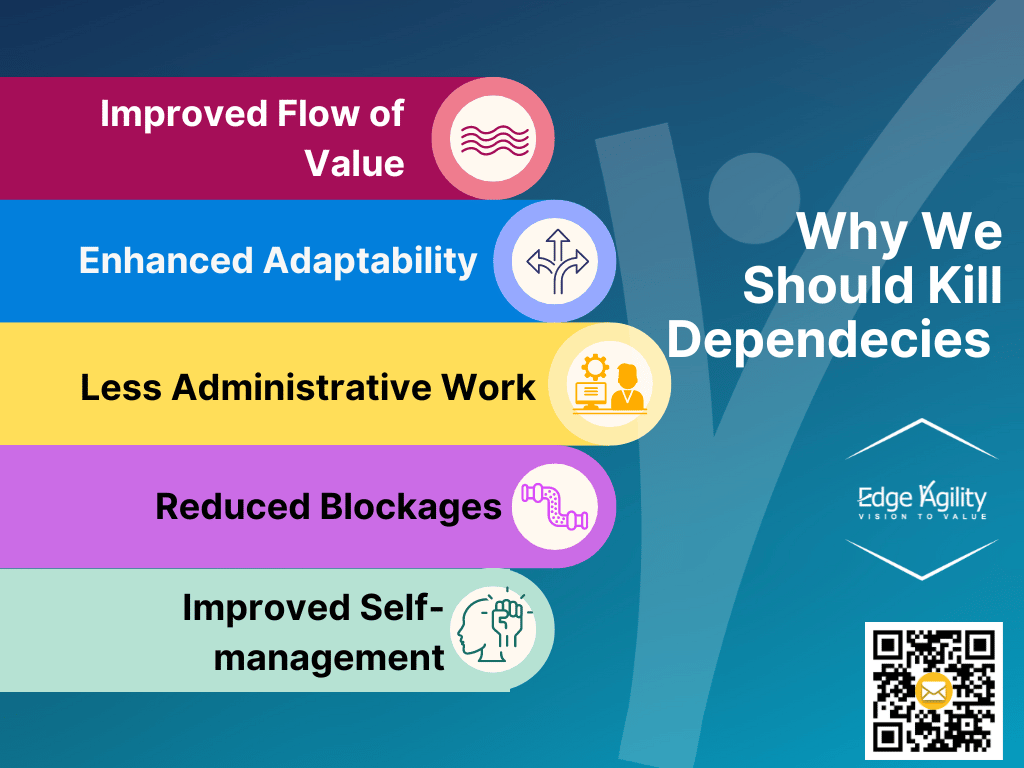Are you tired of those pesky dependencies slowing down your progress and making your sprints feel like marathons? It’s time to stop just managing those dependencies and start obliterating them! Here’s how you can become a true dependency ninja and slice through those bottlenecks like a hot knife through butter.
Dependencies are like that one friend who always promises to bring the snacks to the party but never shows up on time. Sure, you can manage them, but wouldn’t it be better if you didn’t have to rely on them at all?
Why Kill Dependencies?
Reducing dependencies in your workflow isn’t just a good idea—it’s a game-changer. Here are the top five benefits that come with slashing those pesky dependencies:
1. Improved Flow
Without dependencies slowing you down, your team can move at lightning speed. Imagine no more waiting for others to complete their parts—tasks can be tackled head-on and finished faster. It’s like upgrading from dial-up to high-speed internet; everything just moves quicker!
2. Enhanced Adapatability
With fewer dependencies, your team can pivot and adapt to changes more readily. Whether it’s a shift in product priorities or a new technology, your team can respond swiftly without the tangled web of dependencies holding them back. It’s like being able to change directions on a skateboard without losing momentum.
3. Less Administrative Work in Jira or similar tools
Reducing dependencies means fewer tasks to track and manage in project management tools like Jira. This leads to less administrative overhead and more time for actual development work. It’s like cleaning out your email inbox—suddenly, everything feels more manageable and less overwhelming.
4. Reduced Blockages
With dependencies minimized, there are fewer opportunities for tasks to become blocked waiting for others. This means smoother progress and fewer interruptions. Think of it as clearing the traffic from a busy intersection—everything flows much more smoothly.
5. Improved Self-management
When teams have fewer dependencies, they require less oversight and can self-manage more effectively. This leads to less micromanagement, allowing leaders to focus on strategic issues while teams handle the day-to-day tasks with greater autonomy. It’s like shifting from babysitting to coaching—a more empowering experience for everyone involved.

I know we can’t eliminate all the dependencies. However, I am very high confident that we can reduce them. For that, we need to understand dependencies a little better.
One thing that definitely could help is to start measuring them.
“If you can’t measure it, you can’t improve it.“- Peter Drucker
If you can’t measure it, you can’t improve it.
– Peter Drucker
So my tip for for you:
Start measuring the number of dependencies. Analyse them, categorise them, and begin removing them one at a time. Yes, you can’t eliminate all dependencies, but you can definitely reduce them.
Lavaneesh Gautam
If you want to learn how to identify, categorise and kill dependencies, join our Scaled Professional Scrum (SPS) with Nexus Class where we not only discuss how to use the Nexus framework but also how to deal with dependencies.

